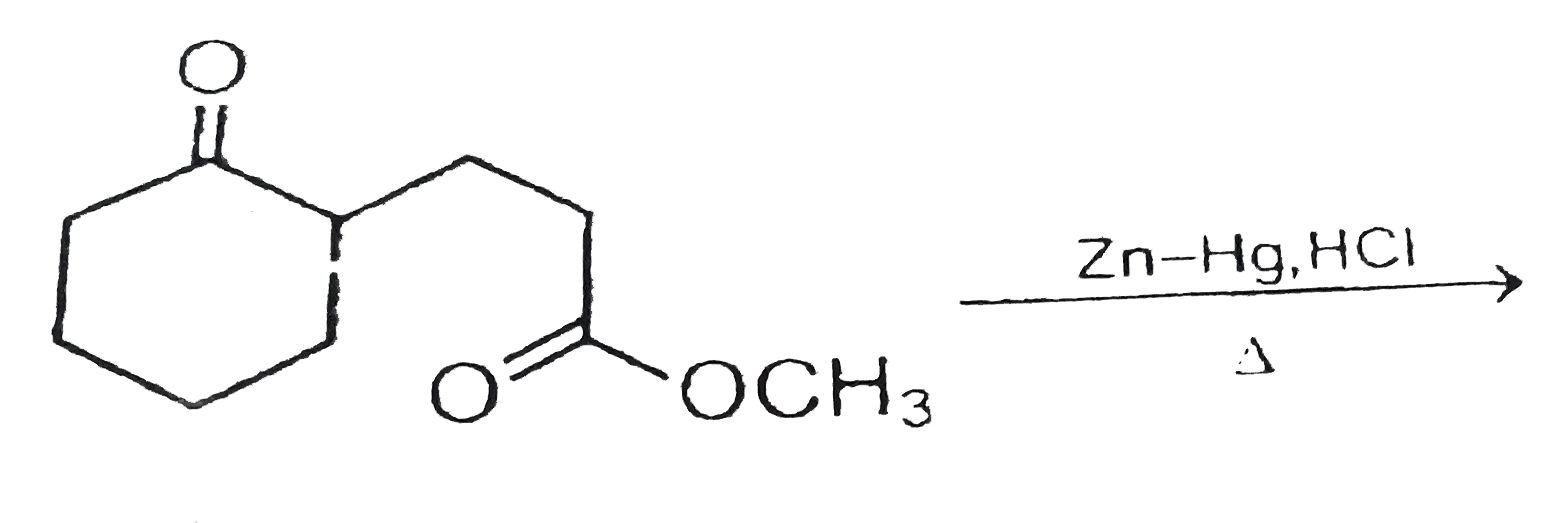Phenol . The compound X on acylation gives aliphatic aromatic ketone. The reaction is :
Gattermann reaction
Friedal-craft reaction
Wurtz reaction
None of these
The correct Answer is:B

In Friedal craft's reaction acetyl chloride reacts with benzene in the presence of anhydrous aluminium trichloride to form acetophenone.

Topper's Solved these Questions
- ALCOHOL, PHENOL AND ETHERBook:ERRORLESS Chapter:ALCOHOL, PHENOL AND ETHERExercise:Ordinary thinking (Ojective questions) Uses of Alcohol, Phenol and Ethers
Explore 20 Videos
- ALCOHOL, PHENOL AND ETHERBook:ERRORLESS Chapter:ALCOHOL, PHENOL AND ETHERExercise:Critical Thinking (Objective Questions)
Explore 17 Videos
- ALCOHOL, PHENOL AND ETHERBook:ERRORLESS Chapter:ALCOHOL, PHENOL AND ETHERExercise:Ordinary thinking (Ojective questions) Preparation of Alcohol, Phenol and Ethers
Explore 46 Videos
- ALDEHYDES AND KETONES Book:ERRORLESS Chapter:ALDEHYDES AND KETONES Exercise:JEE Section (JEE (Advanced) 2018) Numeric answer type question
Explore 1 Video
Similar Questions
Knowledge Check
Phenol Zn−−→ΔX. The compound X on acylation gives aliphatic aromatic ketone. The reaction is :
AGattermann reactionBFriedal-craft reactionCWurtz reactionDNone of these Zn−Hg.HCl−−−−−−−→Δ product of the reaction will be:A
Zn−Hg.HCl−−−−−−−→Δ product of the reaction will be:A B
B C
C D
D
Acylation of benzene to produce aliphatic aromatic ketones is known as
ABenzoin condensationBHydroformylationCClemmensen reductionDFriedel-Cralft 's reaction
Which of the following reactions give aromatic compound ?
View SolutionChlorobenzene Reaction−−−−→XPhenolReaction−−−−→Y
Salicylaldehyde X and Y reaction respectively are
View Solution1−ButyneKMnO4/Δ−−−−−−−→X+Y
Identify X and Y ?
View SolutionCH3−CH3∣CH∣CH3−KMnO4−−−−→(A)H+−−→Δ(B)HBr−−−→ROOR(C)
Product (C) in the above reaction is:
View SolutionBoth carbonyl compounds and acid derivatives though they contain
 grouping yet the reactions given by them are entirely different.
grouping yet the reactions given by them are entirely different.
As Aldehydes and Ketones give addition product with a nucleophile, while carboxylic acid derivatives give nucleophilic acyl substitution through addition/elimination mechanism.

Where X−=−Cl−O−O∣∣C−R−OR,−NR(R) etc.

Why aldeydes and Ketones give nucleophilic addition reaction while acid derivatives prefer nucleophilic acyl substititution reaction?
View Solution


